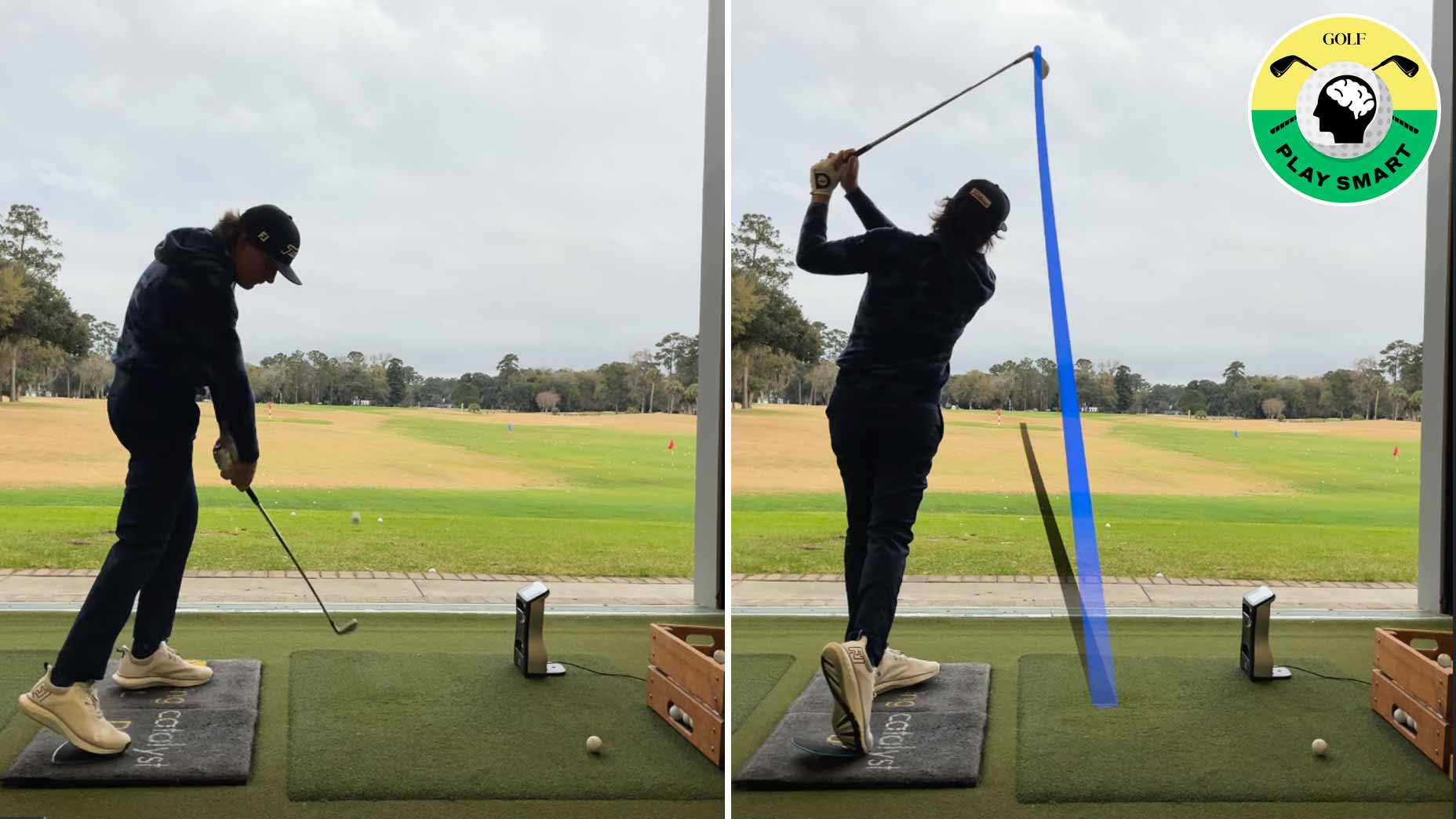Since becoming GOLF’s Instruction Editor, one of the more common questions I hear from people involves golf-ball position and its importance.
Like, is it really that important to follow the so-called rules for every shot, making sure the ball’s positioned off the lead foot with the driver and in the middle of your stance with the putter?
Tiger Woods shows Fred Couples how to hit his saucy draw chipBy: Nick Dimengo
Since I’m not an actual golf teacher, not to mention a top-tier coach — as much as I appreciate the thought via emails — I figured the best thing to do would be to track down someone who is.
So in the video below, GOLF Top 100 Teacher Cameron McCormick answers the popular question regarding ball position for each shot, and shares an exercise to explain why it’s critical — as well as a primer for where the ball should be for different shot types.
How to determine your golf ball position at setup
In the video above, McCormick stands inside of a hula hoop and has three balls set up just outside of it — one off his trail foot, one in the middle of his stance, and one off his lead foot. His goal isn’t only to show the importance of ball position, but also how it influences the shape of your shots once you understand it.
“Here’s how ball position, relative to your stance, can help you shape the ball,” McCormick says.
Next, McCormick sets up to the middle ball, saying this position is generally for hitting a straighter shot — so long as you square the clubface at impact.
“We take this middle ball position. That’s an inside path that’s likely zero-zero to target line, which would then be conducive to a straight shot,” he explains.
Do this to determine your ball position with every club, says Top 100 TeacherBy: Zephyr Melton
So what happens when he moves the golf ball position more towards the back of his stance? McCormick says this will produce more of a draw.
“If I move to the ball in the back of my stance, I’m impacting that golf ball earlier in the arc, which means it’s traveling further to the right,” he says. “That’s conducive to a draw ball-flight — as long as we can close the face enough to that club path.”
Lastly, McCormick explains what happens when the golf ball position is more towards the front foot, which is how you’d hit a fade.
“A ball position that’s forward in the arc is going to make impact with the club later in the arc, making that ball travel further to the left,” he says. “Therefore, all I have to do is hold the clubface to produce a fade ball-flight.”
Overall, your golf ball position matters a lot when it comes to the outcome of your shot. So McCormick suggests using it as a factor when it comes to determining the type of ball-flight you want.
“With ball position, treat it as a variable that you can adjust to further back for a draw and further forward for a fade,” McCormick shares. “By doing this, you’re going to have better command of your flight in various situations.”













